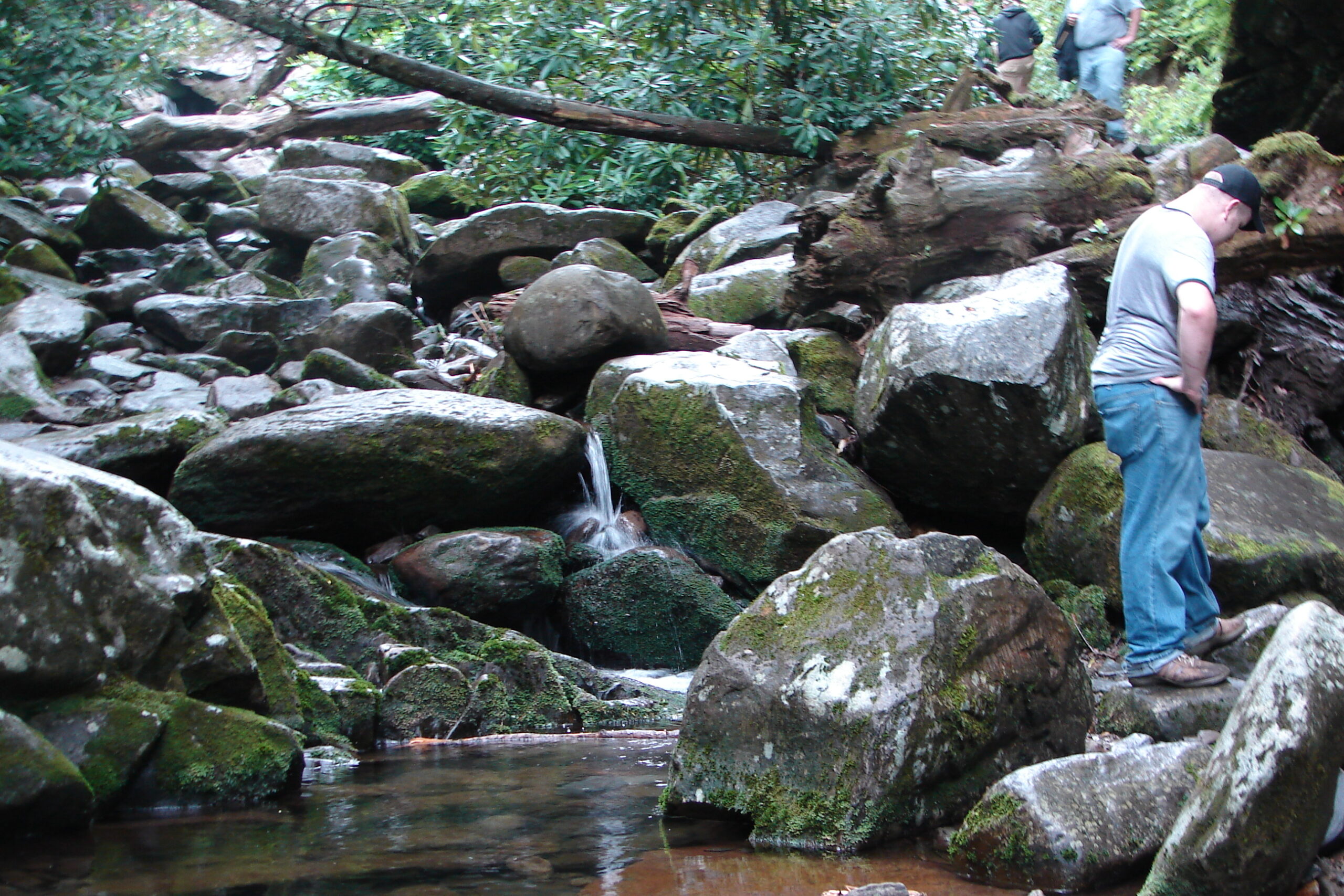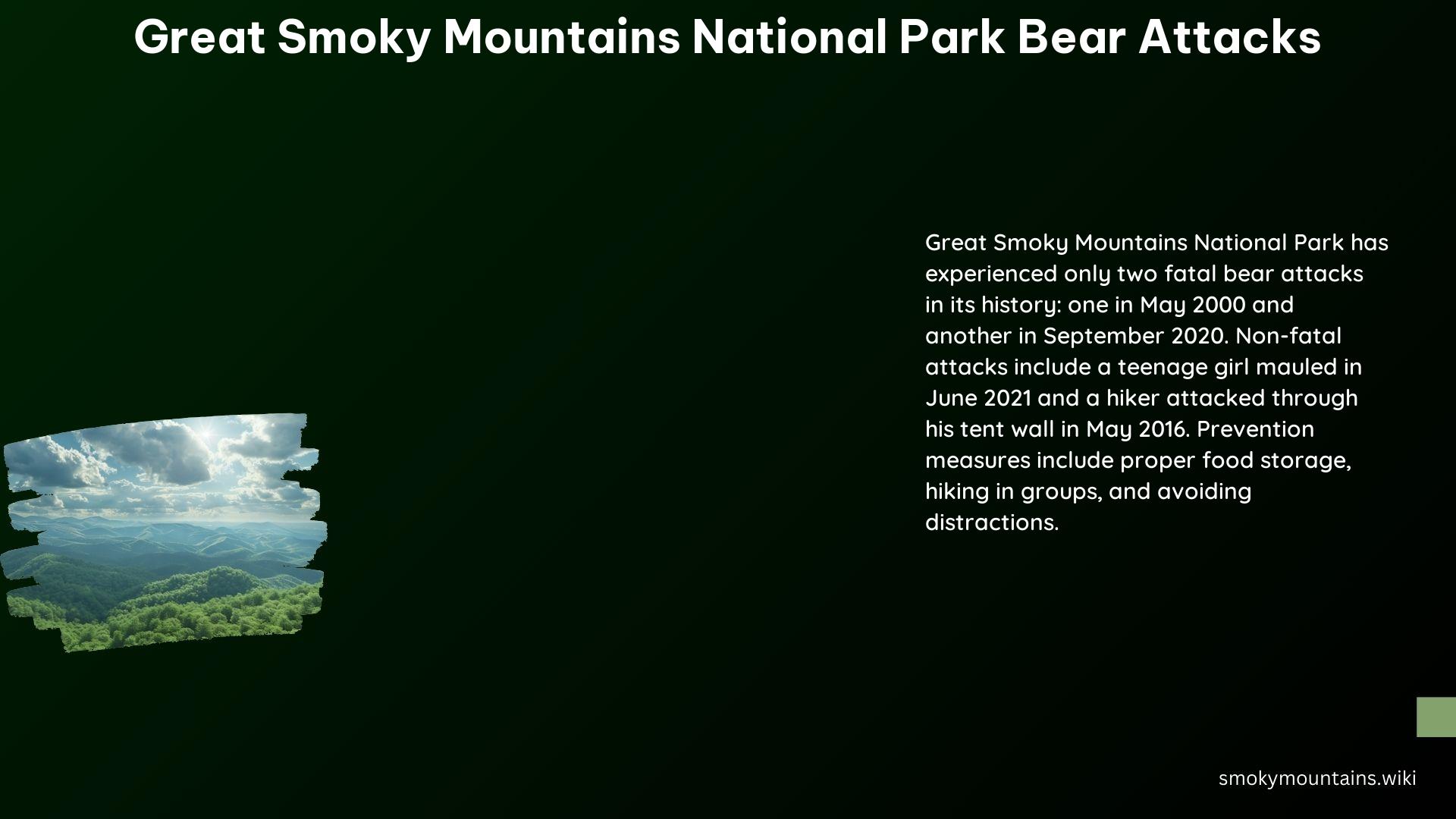Great Smoky Mountains National Park is a popular destination for outdoor enthusiasts, known for its stunning natural beauty and diverse wildlife. While the park is home to a thriving black bear population, the chances of a bear attack are relatively low. However, it’s essential for visitors to be aware of the potential risks and take appropriate precautions to ensure a safe and enjoyable experience.
Fatal Bear Attacks

The Great Smoky Mountains National Park has witnessed a few tragic incidents involving fatal bear attacks. In September 2020, a 43-year-old man was killed by a bear while camping alone in the Hazel Creek area. This incident marked the first recorded fatal bear attack in the park’s history. Prior to this, the only other recorded fatal bear attack in a southeastern U.S. National Park occurred in May 2000, when a 50-year-old man was attacked and killed by a mother bear and cub near Elkmont.
Non-Fatal Attacks

While fatal bear attacks are rare, the park has also experienced several non-fatal bear attack incidents. In June 2021, a teenage girl was mauled after a bear pulled her from her hammock at Maddron Bald. In May 2016, a hiker was attacked through his tent wall at Spence Field shelter. In June 2015, a bear grabbed a teenage boy from his hammock at Hazel Creek campsite.
Prevention Measures
To minimize the risk of bear encounters and attacks, the Great Smoky Mountains National Park emphasizes the importance of proper food storage and bear-aware behavior. Visitors are advised to never feed bears, either intentionally or unintentionally, and to store all food, scented items, and trash in approved containers, such as bear canisters or park-provided dumpsters. Hikers are also encouraged to make noise while on the trails to deter bears from being surprised, and to avoid distractions like phones and headphones.
Safety Tips
In addition to proper food storage and being alert, visitors to the Great Smoky Mountains National Park should follow other safety tips to reduce the risk of bear encounters. Immediately report any bear sightings or encounters to park rangers, maintain a safe distance from bears, and keep dogs on a leash no longer than 6 feet at all times.
Bear Behavior
Understanding the behavior of black bears in the Great Smoky Mountains National Park can also help visitors stay safe. Bears are most active during early morning and late evening hours in spring and summer, and their mating season typically occurs in July, with both female and male bears potentially having multiple mates during the summer.
Park Statistics
The Great Smoky Mountains National Park is a popular destination, receiving approximately 14 million visitors each year. The park is home to an estimated 1900 black bears, making it one of the most densely populated black bear habitats in the United States.
Important Reminders
It’s crucial for visitors to the Great Smoky Mountains National Park to remember that a “fed bear is a dead bear.” Feeding bears can lead to dangerous behavior and ultimately result in their death. Additionally, improperly stored food and garbage can attract bears, causing problems and even fatalities.
By following these guidelines and being aware of bear behavior, visitors to the Great Smoky Mountains National Park can minimize the risk of bear attacks and ensure a safe and enjoyable experience in this stunning natural wonder.
References:
– YouTube Video on Bear Attacks in the Smokies
– Article on Bear Attacks in the Smoky Mountains
– National Park Service Information on Black Bears
– Backpacking Light Forum Discussion on Bear Attacks
– Knoxville News Sentinel Article on Bears in the Smokies
